Battle of Vienna
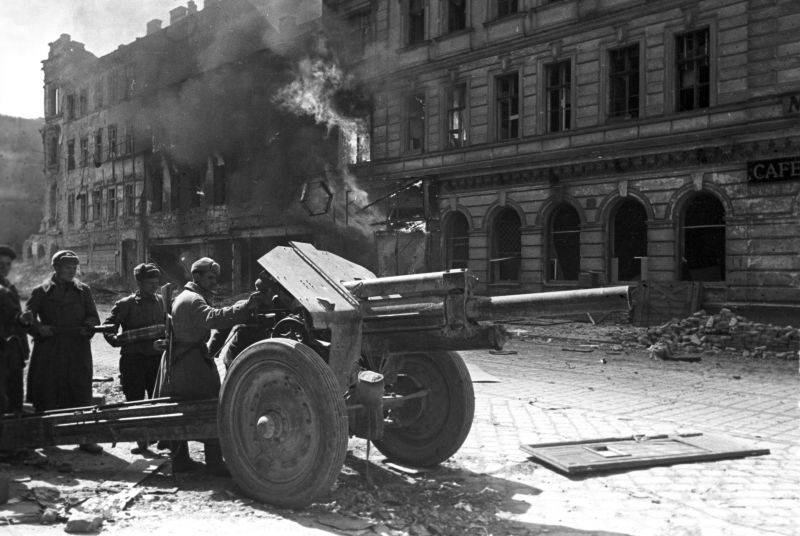
The calculation of the 122-mm howitzer M-30 fires on the enemy in one of the streets of Vienna
The Agony of the Third Reich. 75 years ago, on April 13, 1945, Soviet troops took Vienna. It was the victorious finale of the Vienna offensive operation.
During the Vienna offensive, the Red Army liberated the eastern part of Austria with its capital, Vienna. The Third Reich lost Nagykanizsa, the last oil district in Western Hungary, and the Vienna Industrial Region. The German army suffered a heavy defeat. The Vienna operation was one of the largest in the war, 1,15 million people, about 18 thousand guns and mortars, about 2 thousand participated in the battle on both sides. tanks and self-propelled guns and 1700 aircraft.
General situation
After the capture of Budapest, the Soviet Headquarters set the task of the 2nd and 3rd Ukrainian Fronts (UF) to carry out a strategic offensive with the aim of defeating the German Army Group “South”, liberating the area of Vienna, Bratislava, Brno and Nagykanizhi. The beginning of the operation was scheduled for March 15, 1945. In early March, Soviet armies repelled the last major Wehrmacht offensive in the war around Lake Balaton. In a fierce battle, the last large armored forces of the Wehrmacht were defeated. German divisions suffered heavy losses in manpower and equipment, having lost a significant part of their previous combat readiness.
The Vienna operation began without an operational pause. Reflecting the fierce attacks of the Nazis in the area of Lake Balaton, the Red Army continued to prepare for an attack on Vienna. The Soviet fronts had large reserves and could simultaneously repulse enemy attacks and prepare a new offensive. The situation for the Vienna operation was favorable. The human and material and technical reserves of the German troops were practically exhausted. Reinforcements were formed with great difficulty, often had low combat quality and were quickly spent. The German troops, especially after the defeat in the Battle of Balaton, were bewildered, lost their old fighting spirit.
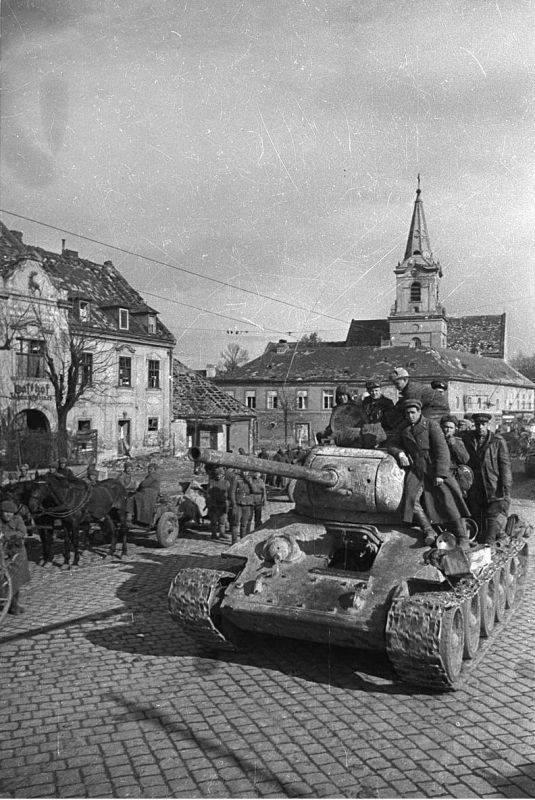
A column of Soviet tanks T-34 in the city of Schwechat in a suburb of Vienna
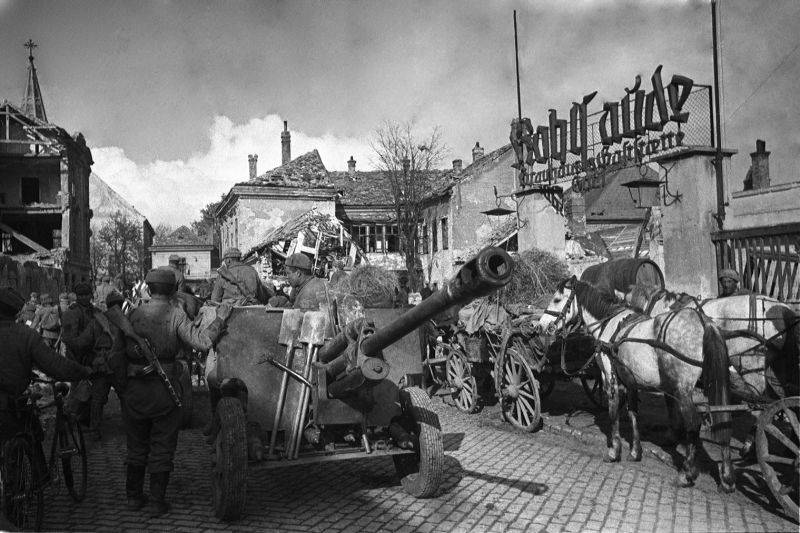
Soviet soldiers in the city of Schwechat in a suburb of Vienna
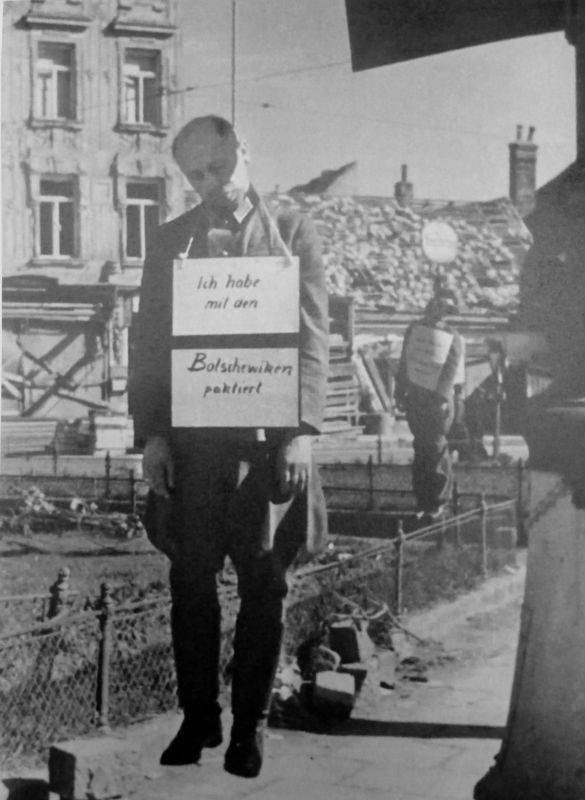
Wehrmacht officers executed by the Gestapo and SS men in a suburb of Vienna. On the bodies of the hanged there are signs with the inscription "I piled with the Bolsheviks." In the foreground is the body of Major Karl Biedermann, an officer from the Directorate of the 17th Military District in Vienna. He entered a group of officers under the leadership of Major Karl Sokoll, who tried to prevent the fighting for Vienna and prevent the destruction of the city. The conspirators established contact with the Soviet command and planned to open the corridor for the Russians to quickly capture the city (the code name for the plot was Operation Radetzky). The conspiracy was uncovered by the SS, and Karl Biederman and two other officers (Hauptmann Alfred Hoot and Oberleutenant Rudolf Raschke) were arrested and hanged on the verdict of the military court on 8.04.1945.
Plan of operation Forces of the parties
The main blow was inflicted by the troops of the 3rd Ukrainian Front under the command of F.I. Tolbukhin. The main strike force of the front included the right wing armies: the 4th Guards Army of Zakhvatayev, the 9th Guards Army of Glagolev and the 6th Guards Tank Army of Kravchenko (the tankers were located in the second echelon). The offensive of the main strike force of the front was supported by the troops of the center - the 27th army of Trofimenko and the 26th army of Hagen. The main forces of the front were to destroy the German 6th SS Panzer Army in the Szekesfehervar region, at the second stage of the operation - to develop an offensive in the direction of Papa - Sopron - Vienna. The troops of the 26th and 27th Soviet armies were supposed to liberate the area of Türier - Szombathely - Zalaegerszeg. Further lead the offensive in South Austria (Carinthia). The left wing of the 3rd UV - the 57th army of Sharokhin, the 1st Bulgarian army of Stoychev, advanced south of Lake Balaton to capture the oil region centered in Nagykanizha. From the air, our troops were supported by the 17th Air Army.
The Vienna operation also involved part of the forces of the 2nd Ukrainian Front under the command of R. Ya. Malinovsky. The 46th Army of General Petrushevsky was given the task of developing an offensive on the city of Gyor, and after taking it, to go to Vienna. The 2nd Petrushevsky Army was supported by the XNUMXnd Guards Mechanized Corps, Danube flotilla and 5th air army. At the same time, the 7th Guards Army developed an offensive on Bratislava, making it easier to destroy the enemy’s Vienna group. In general, the forces of the Red Army (with the support of the Bulgarian army) in the Vienna direction totaled about 740 thousand people, 12,1 thousand guns and mortars, over 1,3 thousand tanks and self-propelled guns, about 1 thousand aircraft.
Our forces were opposed by the forces of the German Army Group “South” under the leadership of Otto Wöhler (from April 7, Lothar Rendulich), part of the forces of the Army Group “F”, General Field Marshal Maximilian von Weichs. Army Group F on March 25 was disbanded and merged with Army Group E of Alexander Löhr. To the north of the Danube, in front of the 2nd UV, was the 8th field army of Hans Craising. From Esztergom to Lake Balaton were the positions of the 3rd Hungarian army of Gauser, the 6th army of Balk and the 6th tank army of the SS Dietrich. West of Balaton was the 24th Hungarian Corps. South of Balaton, the 2nd Panzer Army of Angelis held the defenses. In Yugoslavia there were troops of Army Group "F" (from March 25 "E"). Ground forces supported the 4th Air Fleet. The German-Hungarian forces numbered about 410 thousand people, about 700 tanks and self-propelled guns, 5,9 thousand guns and mortars, and about 700 combat aircraft.
Vienna offensive operation
March 16, 1945, after a powerful artillery bombardment, the troops of the 9th and 4th Guards armies launched an assault on enemy defenses. The Germans fiercely fought back, turning into a counterattack. On the first day of the offensive, our troops only wedged into enemy defenses for 3–7 km. The Hitlerites had a powerful military formation in this sector: the 4th SS Panzer Corps (3rd SS Panzer Division “Dead Head”, 5th SS Panzer Division “Viking”, 2nd Hungarian Panzer Division and other units). The corps was armed with 185 tanks and self-propelled guns. The Germans relied on strong defense, and the 9th Guards Army had to advance in difficult mountainous and wooded areas. Also, the Soviet armies lacked tanks of direct infantry support.
To intensify the blow of the 3rd UV, the Soviet Headquarters transferred to it a mobile unit of the 2nd UV - the 6th Guards Tank Army. Tankers reinforced with artillery. On the 17th, the Glagolev guards were able to expand the breakthrough to 30 km along the front and to 10 km in depth. The 17th Sudets Air Force played a large role in breaking through the enemy defenses. Soviet aviation day and night, she attacked German positions, defense centers, headquarters, lines of communications and communications. However, the Nazis still fiercely fought back. An especially fierce battle was in full swing for the city of Szekesfehervar, which stood in the way of the Soviet strike group. The German command, fearing a breakthrough of the enemy and the encirclement of the advanced forces, held on to this city with all its might and sent reinforcements to this section. On the 18th, our troops advanced only a few kilometers.
The Germans, fearing the blocking of their troops in the area south of Szekesfehervar, began a gradual withdrawal of forces in front of the 26th and 27th Soviet armies. Units from this section were transferred to the north-west and thereby consolidated battle formations in front of the Glagolev and Zakhvatayev guards armies. As a result, the 6th SS Army escaped a possible "boiler". On the morning of the 19th, the Guards Tank Army was thrown into battle. However, the enemy’s defense was not hacked by this time, so Kravchenko’s tankers got bogged down in stubborn battles, and they could not immediately enter the operational field. The Germans won time to withdraw the main forces of their group.
On March 21, units of the 26th and 27th armies reached the Polgardi area. Meanwhile, the troops of the main strike force of the front were 10 km from the lake. Balaton. The attacks of the 17th Air Army were supported by the 18th Air Army of Golovanov (long-range aviation), which attacked the Veszprem communications center. March 22, our troops took Szekesfehervar. By the evening of the 22nd part of the 6th Panzer Army, the SS nearly got into the "cauldron" south of Szekesfehervar. The German troops remained only a narrow corridor of 2,5 km, which was completely sweeped. However, the Germans fought fiercely and were able to break through.
Thus, Tolbukhin’s armies could not block and destroy the enemy’s Szekesfehervar group. But the main task was solved - the enemy’s defense was breached, the wedge of the 6th SS Panzer Army, which was part of the 3rd UV, was destroyed, the troops entered the operational space and quickly went forward. The Nazis suffered heavy losses and retreated, not having time to gain a foothold in the rear positions. On March 23, our troops took Veszprem, on March 25 they advanced 40–80 km, occupying the cities of More and Varpalota.
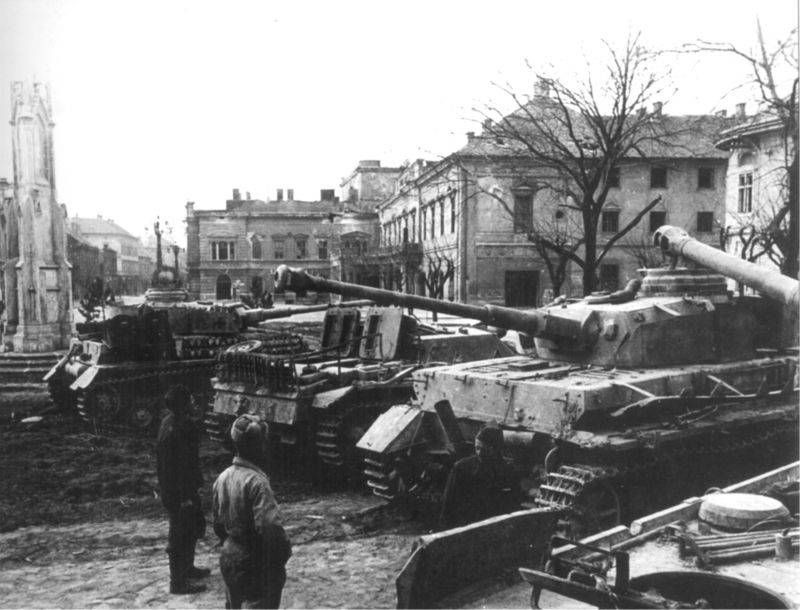
German tanks and self-propelled guns captured by Soviet troops in Szekesfehervar
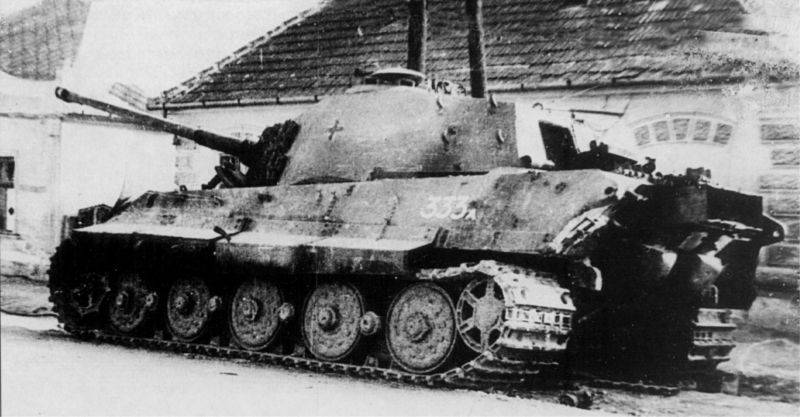
The Royal Tiger heavy German tank, the Feldhernhalle heavy tank battalion, abandoned near the town of Szekesfehervar
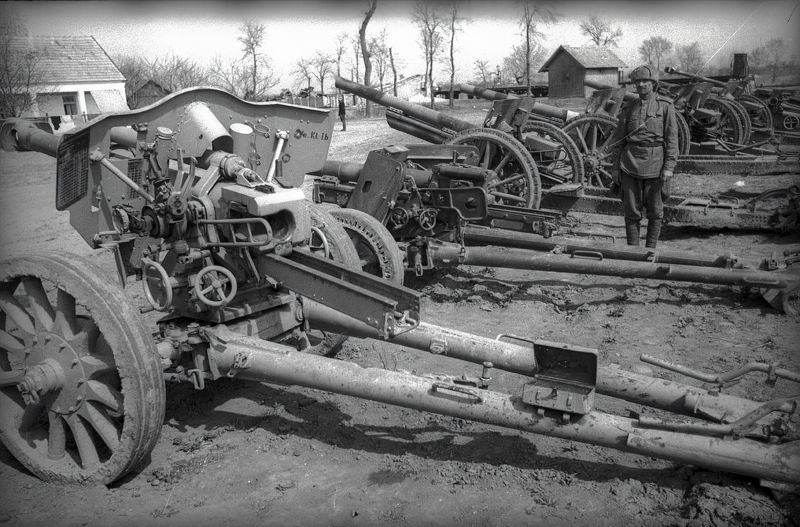
German artillery captured on the outskirts of Vienna. Closest in the frame is the 105 mm howitzer leFH18 / 40, behind it stands the 75 mm PaK-40 anti-tank gun (7,5 cm Pak-40)
Liquidation of the Esztergom-Commodity Group
On March 17, 1945, an attack group of the 2nd UV began the offensive. The 46th Petrushevsky army had large forces - 6 corps (including the 2nd Guards Mechanized Corps), was strengthened by artillery (including 3 artillery breakthrough divisions, one anti-aircraft artillery division, 2 fighter anti-tank brigades, etc.). In total, there were over 2600 guns and mortars, 165 tanks and self-propelled guns in the front's strike force. Also, the offensive was supported by part of the Danube Flotilla - dozens of boats, air squadrons, part of the 83rd Marine Corps. The Germans had about 7 infantry divisions and part of a tank division, over 600 guns and mortars, 85 tanks and assault guns on this site.
The advanced units of the Soviet army launched an offensive in the evening of March 16. They successfully wedged into the battle formations of the enemy. On March 17, our troops advanced 10 km. The attack of the 46th Army did not allow the German command to transfer troops from this section to the direction of the 3rd UV offensive. On the morning of the 19th, the 2nd Guards Mechanized Corps of Sviridov went on the offensive. The 5th assault air corps of the 5th air army of Goryunov played an active role in his strike. By the end of the day, the tankers advanced 30–40 km. The enemy’s defense was destroyed, and three enemy divisions were defeated. On March 20, our troops reached the Danube and pressed the Wehrmacht group (4 divisions) to the Esztergom-Tovarosh group. The Danube flotilla landed troops in the rear of the enemy, which cut off the Germans' escape routes to the west. The landing force, supported by flotilla artillery, held out until the main forces arrived. March 22, paratroopers allied with the tankers of Sviridov.
The German command, in order to close the breach in the defense, to prevent the Russians from breaking through to Gyor and releasing the encircled troops, transferred reinforcements from the southern section of the front — 2 armored divisions and one infantry division, an assault gun brigade. On March 21–25, the Nazis launched several counterattacks, trying to break through the encirclement. However, our troops repelled all attacks. Petrushevsky’s army was strengthened from the reserve of the front. The Germans were only able to slow down the offensive of the Red Army. Meanwhile, Soviet troops crushed the blocked group and took the city of Esztergom. On March 25, the strike force of the 2nd UV created a gap up to 100 km wide and up to 45 km deep. To strengthen the strike force of the 2nd UV, the 3rd tank corps of Akhmanov was transferred to it from the 23rd UV.
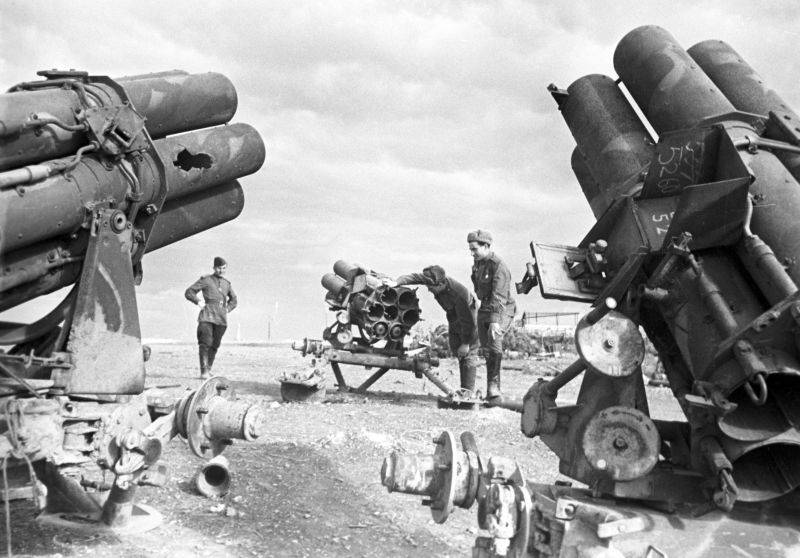
German six-barrel rocket launchers Nebelwerfer 41 captured in Vienna
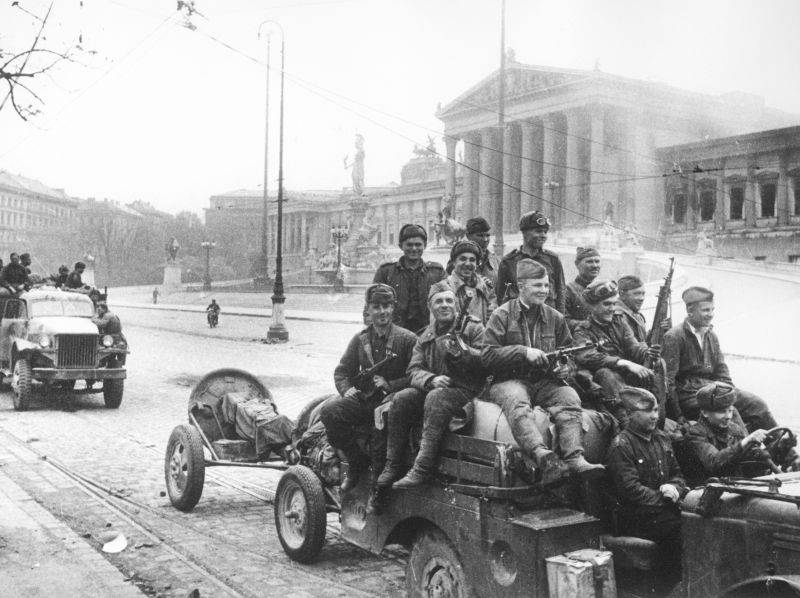
Soviet mortar detachment rides in front of the parliament in Vienna
Breakthrough to Vienna
The offensive on the northern sector of the Soviet-German front facilitated the breakthrough of our troops to Vienna. The 40th Soviet and 4th Romanian armies broke through the enemy defenses on the Gron River and took Banska Bistrica. On March 25, the 2nd UV Army launched the Bratislava-Brnovsk operation. The defeat of the Bratislava group worsened the position of the German army in the Vienna direction.
There was no longer a solid front line. The Germans did not have time to gain a foothold on the rear lines and rolled back to the Austrian border. The Nazis retreated, hiding behind the rearguards. Our advanced units, reinforced with armored vehicles, shot down German barriers, the rest of the troops marched in marching columns. Vanguards bypassed large strongholds and captured crossings, German garrisons, fearing encirclement, fled. Soviet aircraft bombed the retreating columns of the German army, communications centers. On March 26, 1945, Soviet troops occupied large communications centers - the cities of Papa and Devecher. Parts of the German 6th SS Panzer Army and 6th Field Army planned to stop at the turn of the river. Slave, where a strong intermediate defensive line was equipped. However, on the night of March 28, Soviet troops crossed the river on the move. On the same day the cities of Chorn and Sarvar were occupied.
On March 29, Soviet soldiers captured Kapuvar, Szombathely and Zalaegerszeg. Thus, Soviet troops entered the flank of the German 2nd Panzer Army. The German command ordered the army to withdraw. The German troops began to withdraw in Yugoslavia. On March 30, our troops reached the approaches of Nagykanizsa, the center of the Hungarian oil industry. On April 2, Soviet-Bulgarian troops captured the city of Nagykanizsa. By April 4, our troops cleared the enemy of the entire western part of Hungary. Germany lost its last ally. The demoralized soldiers of the Hungarian army, who were still fighting for the Reich, surrendered by the thousands. True, the remnants of the Hungarian army continued to fight for Germany until the very end of the war.
The German army could not stay on the next rear defensive line - along the Austro-Hungarian border. On March 29, Tolbukhin’s armies broke into the enemy’s defenses in the area of Sopron. The liberation of Austria began. On April 1, Sopron was taken. In Austria itself, the Nazi resistance increased. The German command, by the most severe methods, restored discipline and order in the retreating troops. The Nazis came to their senses after a stunning defeat at Balaton, and again fought fiercely. Almost every settlement had to be taken by storm. Roads were mined and blocked by blockages of stones and logs, bridges and crossings were blown up. As a result, the 6th Guards Tank Army was unable to get ahead and immediately take the Austrian capital. Especially fierce battles were at the turn of Lake Neusiedler, spurs of the Eastern Alps, p. Leites and Wiener Neustadt. However, the Soviet soldiers continued to move forward; on April 3 they took Wiener Neustadt. A major role in the success of our troops was played by aviation, which almost continuously launched bombing and assault strikes against the retreating Germans, smashing enemy rear lines, railway junctions, tracks and echelons.
The 46th Army of the 2nd UV was also advancing successfully. On March 27, the defeat of the blocked enemy units in the Esztergom region was completed. Attempts by the Nazis to delay the Russian movement on Gyor did not lead to success. March 28, Petrushevsky troops crossed the river. Slave, took the city of Komarom and Gyor.
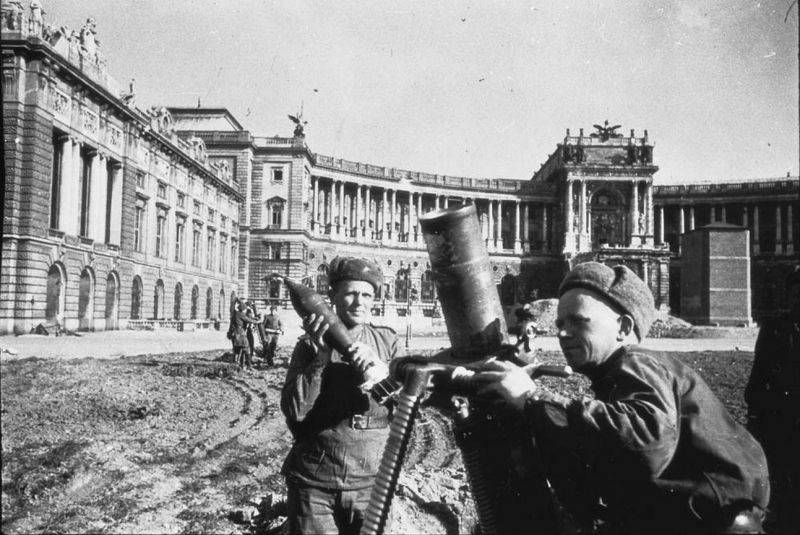
Soviet mortars with regimental mortar in Vienna
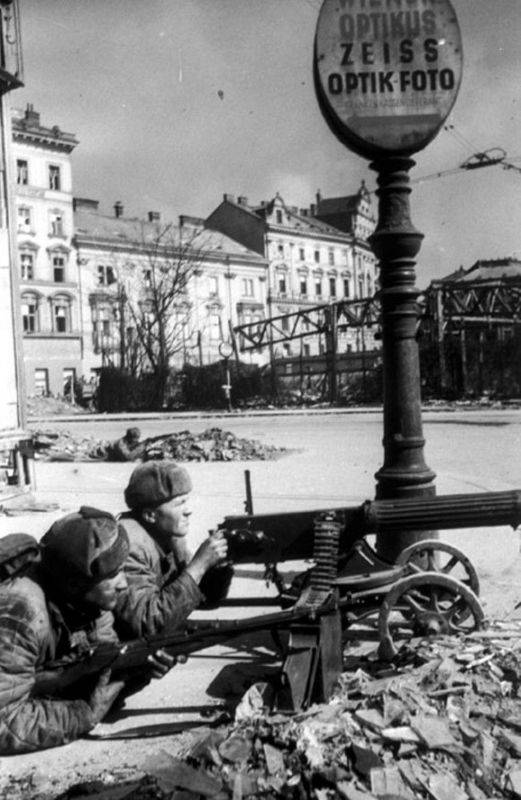
Gunners guard senior lieutenant Shebalkov are fighting in the central part of Vienna
The assault on the Austrian capital
The German command continued to cling to Austria. Vienna was to become a "fortress in the South" and for a long time delay the advance of Russians to the southern part of Germany. The time factor was the last hope of the German military-political leadership. The more the war dragged on, the more opportunities there were to play on the contradictions of the USSR and the West. The Austrian capital was the center of a major industrial area of the Reich, a major Danube port, connecting Central Europe with the Balkans and the Mediterranean. Austria supplied the Wehrmacht with airplanes, aircraft engines, armored vehicles, guns, etc. In Austria, there were the latest sources of oil.
The Austrian capital was defended by the remnants of the divisions of the 6th SS Panzer Army (8 panzer and one infantry divisions, separate units), a city garrison composed of several police regiments. The city and approaches to it were carefully strengthened, ditches, rubble, barricades were prepared. Strong stone buildings turned into strongholds, which occupied separate garrisons. They were connected with other units in a single combat system. Bridges over the Danube and canals prepared for destruction.
Soviet armies stormed the Vienna fortified area from several directions. The troops of the 2nd UV bypassed the city from the north, the armies of the 3rd UV from the east, south, and west. The 46th Army of Petrushevsky, with the help of the Danube Flotilla, crossed the Danube in the region of Bratislava, then crossed Morava and moved to the Austrian capital from the north-east. The Danube flotilla landed in the Vienna area, which helped advance the Petrushevsky army. On April 5, 1945 there were stubborn battles on the southern and southeastern approaches to the Austrian capital. The Nazis fought fiercely, their infantry and tanks often counterattacked. Zakhvatayev’s 4th Guards Army with the 1st Guards Mechanized Corps was not able to immediately break through the enemy’s defenses. Meanwhile, the troops of the 9th Guards Army Glagolev successfully broke through in the north-west direction. Therefore, the troops of the 6th Guards Tank Army, Kravchenko, were sent to the Glagolev Army lane in order to get around and strike the city from the west and north-west.
On April 6, our troops launched an assault on the southern part of Vienna. On March 7, units of the 9th Guards and 6th Guards Tank Armies overcame the Vienna Woods. The Austrian capital was surrounded on three sides: east, south and west. Only the 46th Army could not immediately complete the encirclement of the city. The German command constantly strengthened the north-eastern sector of the defense, transferring units from other directions of the front and even from Vienna itself.
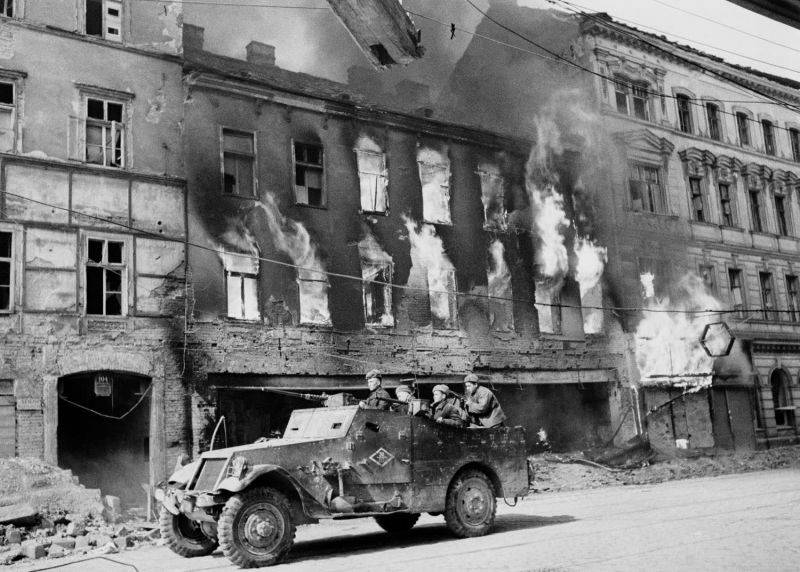
Soviet armored troop-carrier reconnaissance M3A1 Scout Car (American-made) drives during a battle along the street of Vienna. Machine of the 1st Guards Mechanized Corps
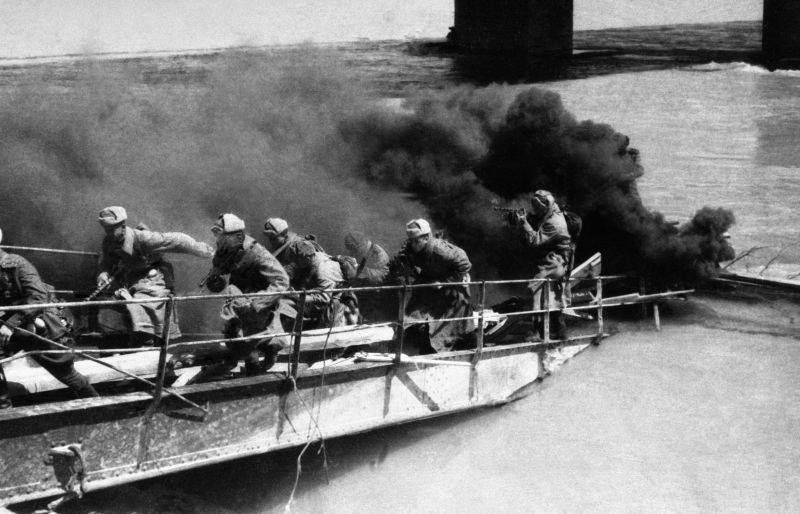
Soldiers of the 4th Guards Army during the battle of the Danube Canal in Vienna
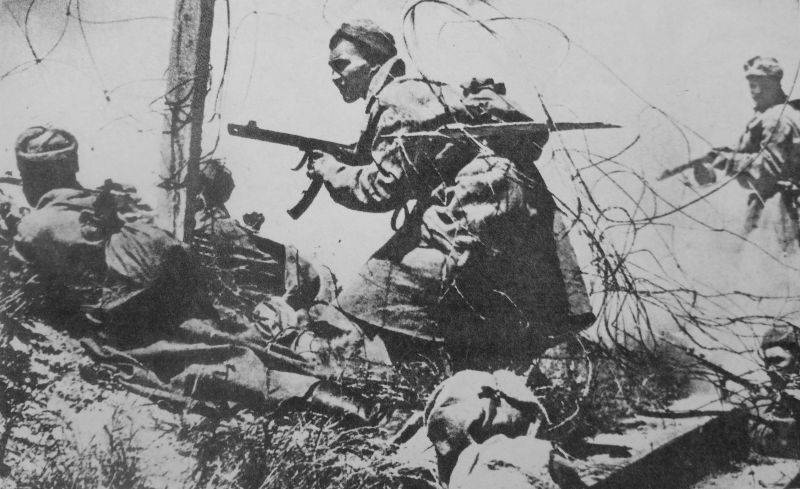
Soviet soldiers fight over the Imperial Bridge
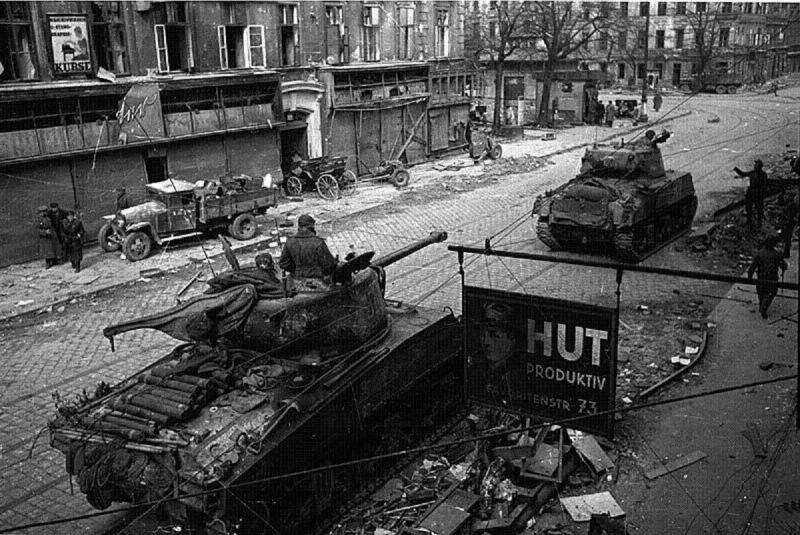
Tanks M4A2 (76) W Sherman of the 1st Battalion of the 46th Guards Tank Brigade of the 9th Guards Mechanized Corps of the 6th Tank Army on the streets of Vienna. This tank battalion under the command of the Captain D.F. Loza Guard, having covered 100 kilometers, a series of barricades and resistance nodes, broke through to the center of Vienna on April 9, 1945 and held it until the main brigade forces approached. The detachment consisted of 18 Shermans, 3 ISU-152, and a company of paratroopers of 80 people. D.F. Loza received the title Hero of the Soviet Union for this fight
Fierce fighting for Vienna lasted until April 13th. Contractions went day and night. The main role in the liberation of the capital was played by assault groups reinforced by tanks and self-propelled guns. Parts of the army Zakhvatayev stormed the capital of Austria from the east and south, the troops of the army of Glagolev and Kravchenko - from the west. By the end of April 10, the Nazis controlled only the central part of Vienna. The Germans destroyed all the bridges in the city, leaving only one - the Imperial Bridge (Reichsbrücke). He was mined, but left to be able to transfer troops from one part of the city to another. On April 9 and 10, our troops stormed the bridge, but without success. On April 11, they took the Imperial Bridge, landing with the help of the ships of the Danube Flotilla. The paratroopers fought off one enemy attack after another, fought in complete encirclement for almost three days. Only on the morning of the 13th the main forces of the 80th Guards Rifle Division broke through to exhausting fighters. It was a turning point in the battle of Vienna. The eastern part of the German garrison was divided, the Germans lost a unified management system, support from the west bank. The eastern group was destroyed by the end of the day. The Western group began to retreat. On the night of the 14th Vienna was completely cleared of the Nazis.
By April 15, 1945, the Vienna operation was completed. Parts of the 9th Guards Army took the city of St. Pelten, after which Glagolev’s army was taken to the front reserve. The 6th Guards Tank Army was returned to the 2nd UV; it was sent to storm Brno. The troops of the center and the left wing of the 3rd UV reached the Eastern Alps. Bulgarian troops liberated the area between the rivers Drava and Mura, went to the area of Varazdin. The Yugoslav army, using the success of the Russians, liberated a significant part of Yugoslavia, occupied Trieste and Zagreb. In late April, our troops resumed their offensive in Austria.
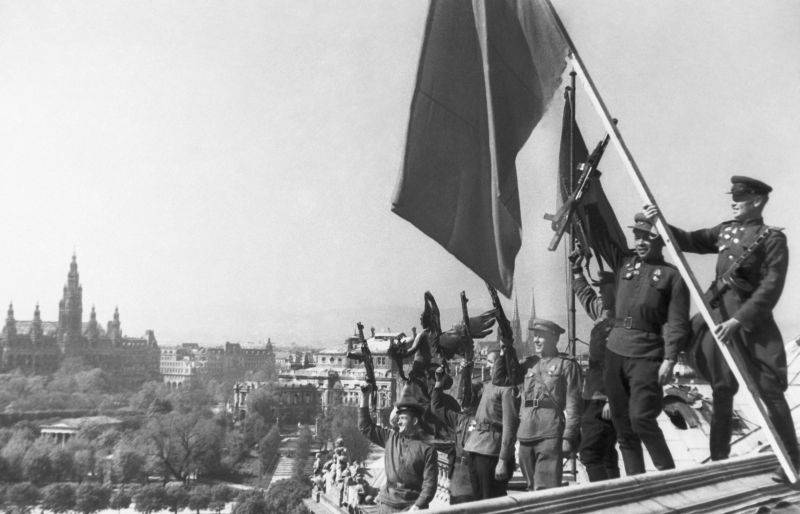
Soldiers and commanders of the Red Army with a banner on the roof of a building in Vienna
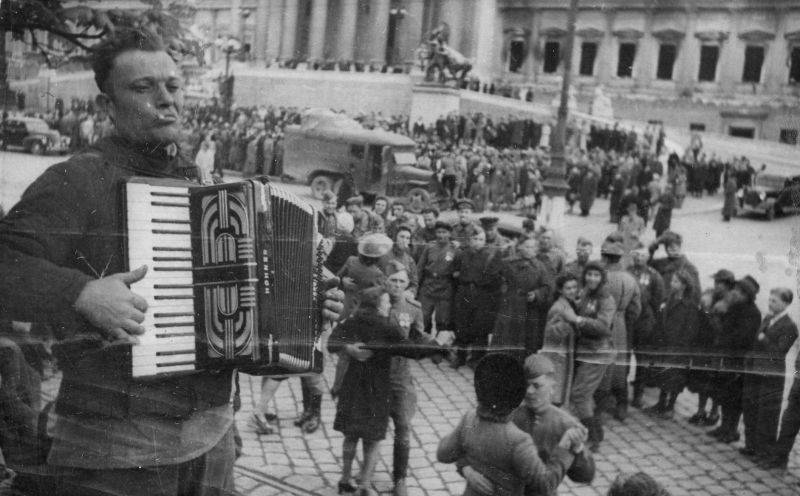
Red Army soldiers and residents of Vienna are dancing at the parliament building
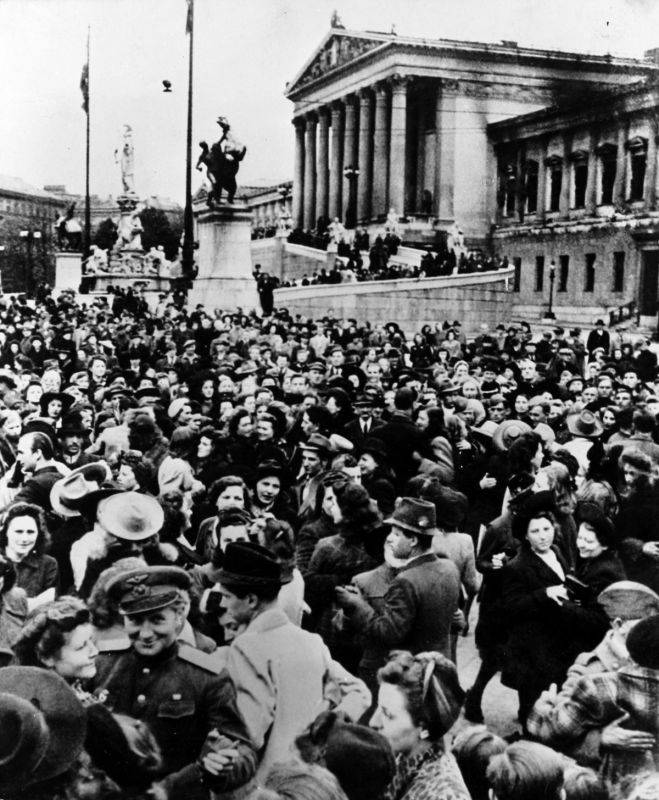
Residents of the Austrian capital of Vienna dance a waltz in the city square
- Alexander Samsonov
- http://waralbum.ru/
- The agony of the Third Reich
The Agony of the Third Reich. 75 years of the Vistula-Oder operation
The assault on the East Prussian fortress of the Reich
How Soviet troops liberated Warsaw
How Stalin created the foundations of a new world
The fierce battle for the Slavic Pomerania
75 years ago, Soviet troops stormed Budapest
The stubborn battle for Silesia
The Miracle of Breslau. How they stormed Hitler’s last fortress
"Spring Awakening." The last blow of the Reich
The defeat of the German army in Upper Silesia
How the Red Army stormed Gdynia and Danzig
How the Red Army stormed the capital of Slovakia
The assault on Konigsberg: an “impregnable” fortress was taken in four days
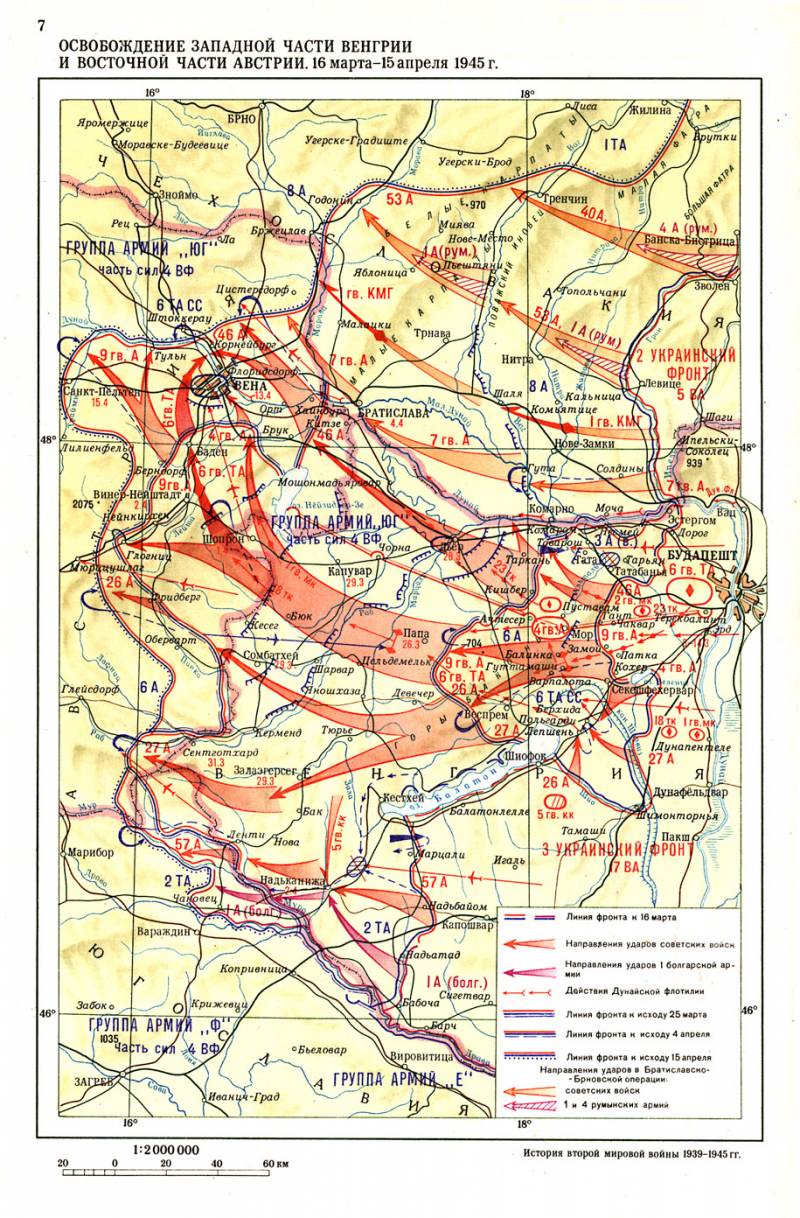
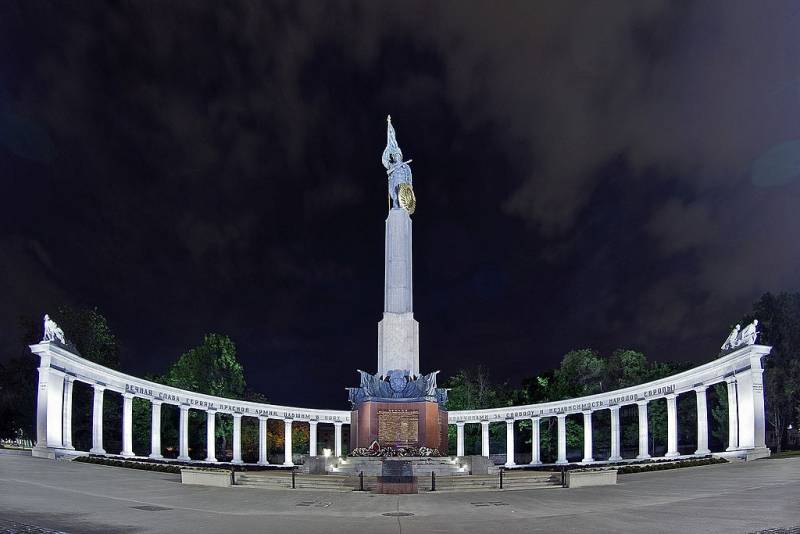
Information